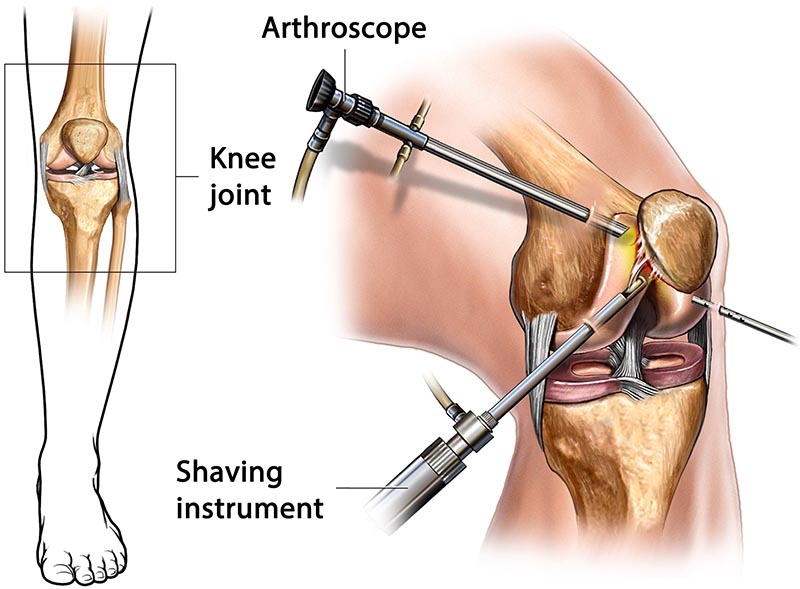Knee Arthroscopy
What is Knee Arthroscopy?
Knee arthroscopy is a minimally invasive surgeries treatment used to detect and treat knee joint issues. During the surgery, the surgeon will create a very small incision in the knee and insert a very small camera called an arthroscope into the knee, allowing the surgeon to watch inside the knee joint on a monitor.

Why Knee Arthroscopy?
If you have significant knee pain, your doctor may prescribe a knee arthroscopy to either diagnose the ailment that is causing the pain or to identify the site of the discomfort and cure the problem.
The following knee problems can be identified or treated using arthroscopic knee surgery:
- Bone fractures in the knee
- Patella that is out of place
- The posterior or anterior cruciate ligaments have been torn.
- Baker’s cyst removal
Meniscus tear - Synovium enlargement
- Cartilage fragments in the joint
The procedure
During the surgery, the surgeon may provide a local, regional, or general anaesthesia. Following that, the surgeon will make a few small incisions in your knee and inject sterile salt water into it to enlarge it. This allows the surgeon to view more clearly into the joint.
The surgeon will next implant an arthroscope and examine the joint using the pictures obtained by the associated camera on the operating room display. Once the surgeon has determined the source of the problem in the knee, he will put small instruments into the incision to remedy the problem. Following the correction of the issue location, the surgeon drains the saline water from the joint and sutures the wounds closed.
What is the recovery time of knee arthroscopy?
Because it is a minimally invasive surgery, you will most likely be able to go home the same day for recuperation, and you should have someone look after you at home for at least one day. After you come home, it is critical that you follow your surgeon’s recommendations. Knee arthroscopy recovery is substantially faster than typical open knee surgery.
Pros
- Minimally invasive: When compared to standard open surgery, an arthroscopic technique is far less invasive.
- Shorter recovery time: Because the treatment eliminates the need to cut through muscles and tendons, the patient will recover quickly.
- Less surgical risk: Because the operation is less intrusive and does less harm to the body, the surgical risk is often lower.
Cons
- Even if the invasion is little, the body will experience stress and agony as a result of being sliced and probed.
- The technique does not work for arthritic pain or degenerative knee issues.
- It has no effect on long-term pain or function.

